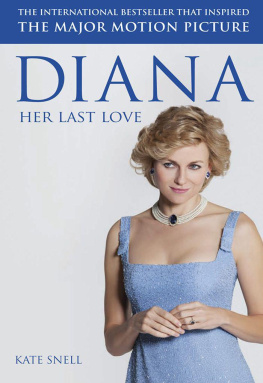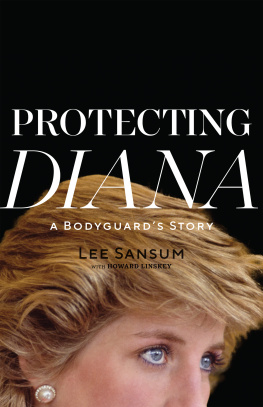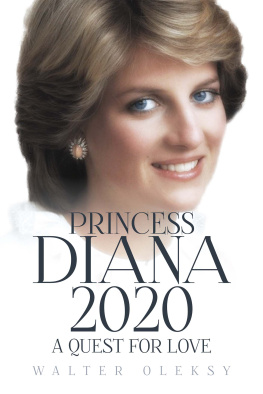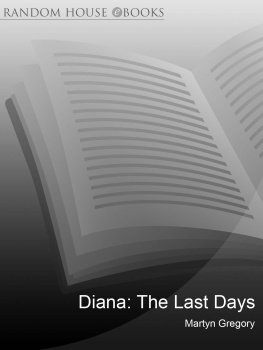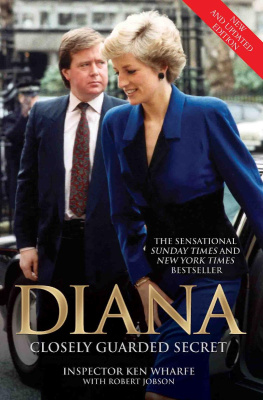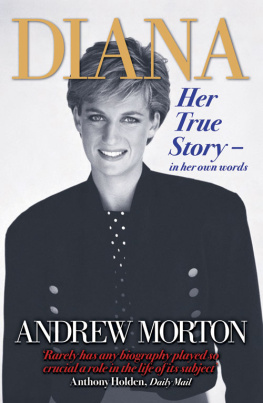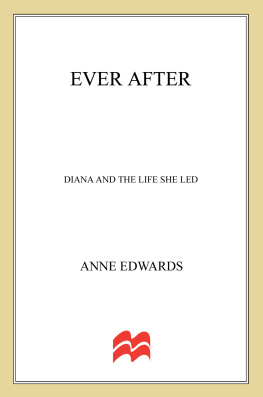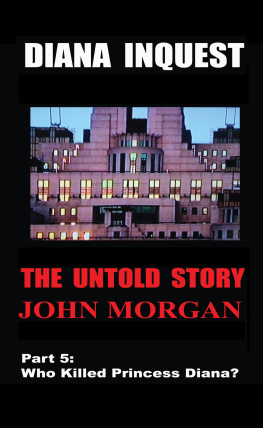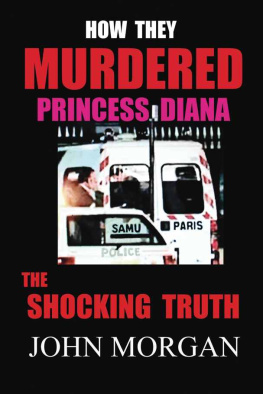DIANA
HER LAST LOVE

First published by Granada Media, 2000
An imprint of Andre Deutsch Ltd
This edition first published by Andre Deutsch Ltd, 2013
An imprint of the Carlton Publishing Group
20 Mortimer Street
London
W1T 3JW
In association with Granada Media Group
Text copyright Kate Snell, 2000, 2013
The right of Kate Snell to be identified as the author of this work has been asserted by her in accordance with the Copyright, Designs and Patents Act 1988.
All rights reserved. This book is sold subject to the condition that it may not be reproduced, stored in a retrieval system or transmitted in any form or by any means, electronic, mechanical, photocopying, recording or otherwise without the Publishers prior consent.
A catalogue record of this book is available from the British Library.
ISBN 9781780120973
In memory of my Father
Contents
FOREWORD
Where were you when Kennedy was assassinated?
The murder of the American President on 22 November 1963 was one of those seminal moments for a generation. Yet by and large it held most resonance for Americans themselves. Seventeen years later, the murder of former Beatle John Lennon on 8 December 1980 evoked similar questions and similar feelings of the end of an era.
Yet nothing has quite succeeded in bringing the planet together in collective shock and grief as the tragic death, on 31 August 1997, of Diana, Princess of Wales.
Where were you when you heard the news of Princess Dianas death?
We knew who John Kennedy was. We already understood the genius of John Lennon. Their untimely deaths immortalized them but did not redefine them. Before the car crash in Paris, most people in the world had developed an opinion about Diana. Yet the moment they learned of her death, a process began in which the Princess was redefined. We had taken her for granted, and now she was gone.
After the shock came a new appreciation of her life, and a tremendous sorrow for the sadness surrounding much of her existence. We suddenly realized that we hardly knew her at all.
Inevitably and almost immediately, the conspiracy theorists ran amok. It was the Marilyn Monroe syndrome revisited and doubtless such fantasies will be regularly returned to over the years. Most people, however, do not want to dwell endlessly on the circumstances of Dianas death but rather want to know more about this fascinating character in life.
I never met Diana or made films about her whilst she was alive, but it was easy to become infused with the prevailing journalistic opinions. We all had better subjects to write about and document than a woman the industry widely regarded as flaky. That has all changed for me in the last year.
Where was I when I heard the news? On my honeymoon, in a village in the middle of Indonesia, at about midday local time, when the sound of clamouring voices made all the visitors turn around. The locals were clustered around a tiny radio, on which an announcer was speaking in a language I dont understand. The only word we could pick out was Diana, repeated over and over again. Whats going on? we all wanted to know. Diana, she dead! That was about as far as their English would stretch. We thought it must be some kind of mistake. As the day rolled on, everybody else was also picking up the news. It was extraordinary. Old women in the middle of rice fields were sobbing, at restaurants and bars everyone talked in numbed disbelief. This was the island of Bali, and everyone could remember when Diana visited for a holiday in August 1993. They felt, as did the rest of the world, that Diana belonged to them.
For the next week, the only comfort was to watch every awful reminder of the tragedy on the BBCs World Service, on CNN and a dozen other satellite stations from different parts of the world. Throughout, I felt a journalistic pull that told me my duty was back in London, to help out. But what could I have done? I could only have massaged my own sense of shock through working out the tragedy in a practical way. On my return to London I went straightaway to Kensington Palace to see the incredible floral tributes, and to experience the physical sensation of a shared loss.
As time went on, more books and films about Diana appeared. We all thought we understood who she was. Her death now seemed to be explained away.
In May 1999, I was asked to make a film about Diana for London Weekend Television. I was not convinced there could be anything left to say about her. During the months that followed I met many many people who had been extremely close to Diana at different times in her life, and slowly I began to see a very different woman to the one I had assumed I knew.
As time progressed not only did my fascination for Diana develop but my admiration, too. I felt I was beginning to understand what lay behind her faade, what drove her and what haunted her.
Some of her friends who had been kind enough to give up so much of their time for me during the film making suggested that I should record my perceptions in the form of a book as well. There were considerations, not always easy ones the questions of perceived intrusiveness and the possible effect on Dianas sons, to name but two. However I concluded that on balance the book could reinterpret key events, and could eventually provide a picture of those final weeks, which in the end might help to set the record straight and lay to rest some of the myths that have sprung up around her death.
If you ask most people to sum up the key moments in Dianas life, it is likely that they will include her marriage to Charles, the birth of her sons, bulimia, self-mutilation, the divorce, feelings about Camilla Parker Bowles, lots of holidays, James Hewitt, landmines, being on the cover of magazines, Dodi and her tragic death. A life summed up in twelve instalments, many of them unhappy. The woman that emerges from the resulting picture sounds one-dimensional. I felt there must be more. And indeed there is, both in terms of events and in terms of who Diana really was.
The period in her life between 1992 and 1997 has not been explored nearly as much as the years when she was married to Charles, and so much has gone undetected. Secondly, the focus has been essentially on the stepping stones of her life, rather than the building blocks of her personality. She wasnt forever the shy princess, or the broken-hearted wife. Diana could laugh; indeed she had a wicked sense of humour, and she was also considerably more intelligent than many people have given her credit for she could read and digest a complex medical volume or a serious religious work, just as easily as she could devour a book by Barbara Cartland or Danielle Steel.
Above all, perhaps, one begins to admire the fact that she was able to survive so much that life threw at her. From her nave entry into a loveless marriage, which quickly pushed her into the well-documented bouts of bulimia and self-mutilation, she became the woman who took on the worlds governments over the landmines issue. Where did that strength come from? I became inspired to find out how she navigated that rocky road from hurt girl to powerful woman campaigner.
It quickly becomes apparent as you study Diana, that she was driven by her need for love, just as some are driven by the wish to make money or to find enough food to stay alive. To Diana, love was as fundamental as food or money. There is no doubt that she was deeply in love with Charles. He was her first love and would always remain a pivotal figure in her life. But she knew that it wasnt to be, and she needed to be loved as well as to love. By the end what Charles and Diana had discovered was a mutual friendship, which had she lived would doubtless have matured further.
Next page
